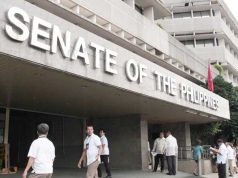RE growing capacity but needs policy, fund support
By Cathy Rose A. Garcia
Associate Editor
ROME, ITALY — Renewable energy (RE) capacity is increasing around the world, but more needs to be done to address challenges in policy, financing and grid integration, experts said in a forum here last week.
At the Global Experts Meetings on Frontiers in Biofuels & Bioenergy and Green Energy, Hallam Energy Director Abhishek Asthana said renewable energy capacity growth could be higher by as much as 25% “if regulatory, policy and financial challenges are addressed,” with China and European Union accounting for half of the upside potential.
Citing data from the latest International Energy Agency (IEA) renewables report, he said the RE capacity installation last year was led by solar photo voltaic (PV), followed by wind, hydro and bioenergy.
“In 2018, the new RE installations added 177 GW of capacity. Is that enough? It’s impressive, but capacity has to grow by 300 GW every year on an average by 2030 so we can reach the (environmental) goals of the 2050,” Mr. Asthana said, referring to the European Union’s plan for net-zero carbon emissions by 2050.
He said the overall the global RE capacity would grow to one terawatt (equivalent to one trillion watts) by 2023, led by China and the European Union. In an accelerated scenario, the figure will jump to 1.3 terawatts.
For the Association of Southeast Asian Nations (ASEAN), Mr. Asthana said the RE capacity would grow by 40% of the current value or 22 GW to reach a total of 80 GW by 2023.
“The technologies will shift from currently hydropower to bioenergy, wind and solar PVs… Overall, RE covers less than a fourth of electricity growth. It’s still small and ASEAN countries are lagging behind,” he said.
Asked why ASEAN countries are falling behind in RE capacity growth, Mr. Asthana said: “If there are no government policies to drive the growth and are not adequate, it will not happen.”
Mr. Asthana, who helms the energy research group of UK’s Sheffield Hallam University, said government policy is “key to attracting investments in renewables, and ensure appropriate market design for reliable and cost effective grid integration.”
“Greater use of solar, wind and bioenergy, together with energy efficiency and technologies is needed, which will cause emissions to peak immediately but decline in the long term. Solar PV will lead the renewables growth in the next five years, and its untapped potential is still huge,” Mr. Asthana said.
For bioenergy to gain ground, he said government policies, incentives and strict sustainability regulations are needed.
NEW TECHNOLOGIES
At the same time, new renewable energy technologies are expected to help countries reduce global emissions within the next three decades.
Koji Hashimoto, a professor emeritus of Tohoku University Institute for Materials Research, has developed a technology that he said would “supply renewable energy to the world in the form of synthesized natural gas methane by electrolytic hydrogen generation and subsequent methane formation from hydrogen and captured carbon dioxide.”
In his presentation at the conference, Mr. Hashimoto said that if a natural gas plant were to use the technology, it will generate more power at 2.6 kWh and 940 grams (gm) of carbon dioxide. To compare, a coal power plant will produce 1 kWh and generate the same amount or 940 gm of carbon dioxide.
“Natural gas is better than coal. We collaborated with natural gas company because they need to purify the natural gas. They need to release carbon dioxide. But they feel guilty to emit carbon dioxide… They wanted to collaborate with us to convert all carbon dioxide to methane using our technology,” Mr. Hashimoto said in an interview on the sidelines of the forum.
Some of his former students are part of a company Hitachi Zosen Inova, a clean tech company that is working to deliver the technology for a power-to-gas plant in Japan. The goal of the power-to-gas technology is to “balance the supply and demand for power in electricity networks with renewable energy.”
However, Mr. Hashimoto said the ultimate goal is to use renewable energy in the future. He noted European cities, particularly in Germany, are already thinking of using 100% RE sources.
“For the use of only renewable energy, we need to store the surplus electricity (to address the issue of intermittent power). The most convenient and easily applicable technology to store the surplus electricity is the formation of methane. If we regenerate steady electricity from methane the whole world can keep the sustainable development only by renewable energy,” he said.
Alex Van den Bossche, a professor at Ghent University in Belgium, said that the use of the best available technologies today can help countries achieve net-zero carbon emissions by 2050.
“At a first sight, 20% CO2 or even net-zero in 2050 seems an almost impossible task. However, if the best available technologies of today are combined, it seems more feasible than ever. Not forgetting that it will take time and effort to develop and implement these techniques,” he said.
Among these include the use of full PV roofs to provide heating for homes, and the development of electric ultralight vehicles.
“One should not be happy with small improvements, but rather think in a technology in large steps that gradually penetrates the society. It is even possible at an affordable cost, but it might be a slightly different living style, but where the major part of activities is still possible. The problem will be to convince the society that ‘business as usual’ and some small changes are not enough,” Mr. Van den Bossche said.



